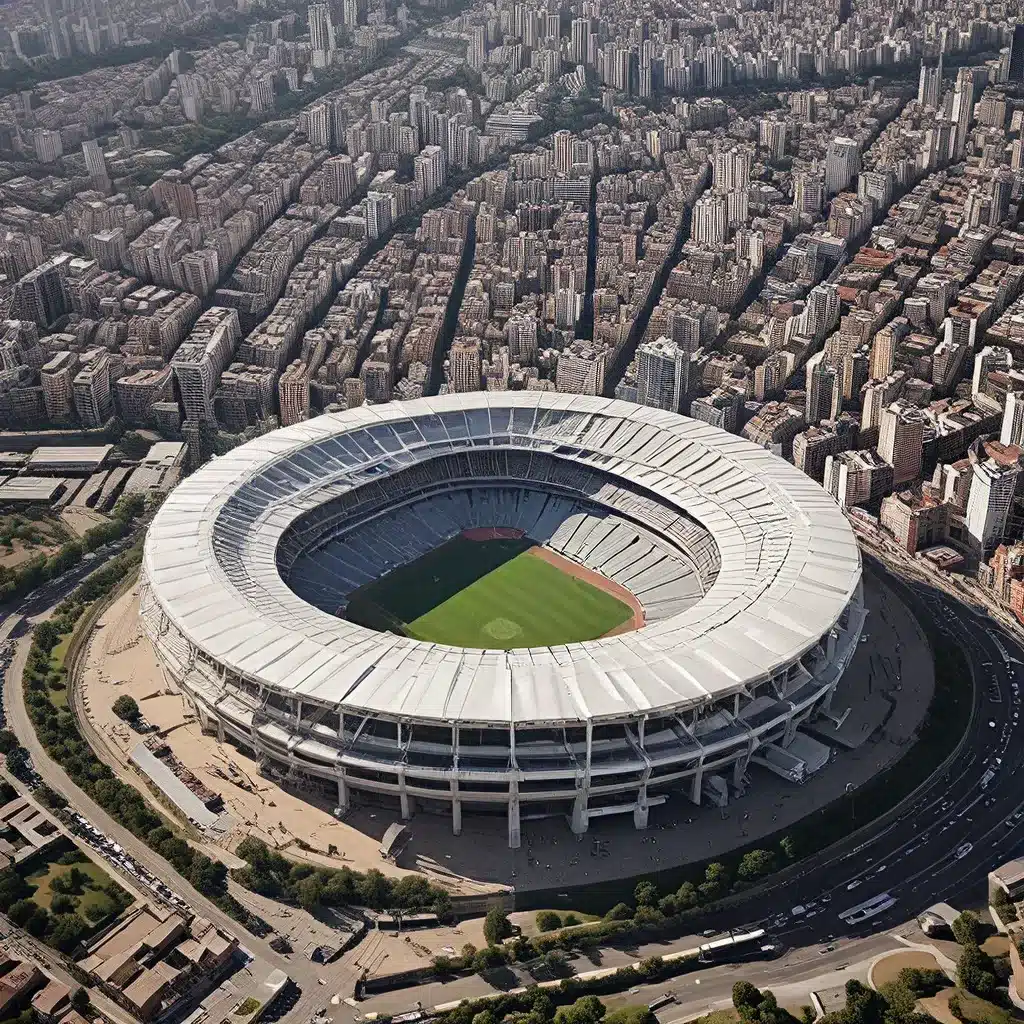
A Colossal Monument to Argentine Passion
The Estadio Monumental, also known as the Estadio Antonio Vespucio Liberti, stands as a colossal testament to the unwavering passion and pride of the Argentine people. This iconic stadium, located in the heart of Buenos Aires, is not merely a venue for sporting events but a true architectural masterpiece that seamlessly blends function and form.
Constructed between 1935 and 1938, the Estadio Monumental was designed by the renowned Argentine architect José Luis Delpini. Delpini’s vision was to create a stadium that would capture the essence of Argentine culture and serve as a symbol of the nation’s unwavering love for the beautiful game of football (soccer). The result is a structure that is both imposing and graceful, a harmonious blend of classical and modernist elements that has earned it international acclaim.
Towering Grandeur and Symbolic Significance
One of the most striking features of the Estadio Monumental is its sheer size and scale. Spanning an impressive 70,000 square meters, the stadium can accommodate up to 67,000 passionate fans, making it one of the largest football stadiums in South America. The colossal concrete and steel structure rises up from the ground, its imposing presence commanding the attention of all who behold it.
Beyond its physical dimensions, the Estadio Monumental is imbued with symbolic significance that resonates deeply with the Argentine people. The stadium’s design is said to be inspired by the architectural style of ancient Greco-Roman civilizations, reflecting the country’s rich cultural heritage and its deep-rooted connection to the broader Mediterranean world.
A Harmonious Blend of Styles
The Estadio Monumental’s architectural style is a remarkable fusion of classical and modernist elements, creating a unique and visually stunning structure. The exterior of the stadium is characterized by its grand, neoclassical façade, adorned with towering columns and intricate bas-relief carvings that pay homage to the athletic prowess of the ancient Greeks and Romans.
Inside the stadium, however, the architectural language shifts to a more modernist aesthetic. The vast, open-air seating areas are designed with clean lines and a minimalist sensibility, allowing the focus to remain on the action unfolding on the pitch. The use of reinforced concrete and the integration of modern engineering techniques lend the stadium a sense of strength and durability, while the overall design maintains a harmonious balance between the classical and the contemporary.
Embracing the Natural Landscape
One of the most remarkable aspects of the Estadio Monumental’s design is the way it seamlessly integrates with the surrounding natural landscape. The stadium is situated on the banks of the Río de la Plata, with the majestic Buenos Aires skyline serving as a stunning backdrop. The architects carefully positioned the stadium to take advantage of the site’s natural features, ensuring that the structure would complement rather than overwhelm the existing environment.
The stadium’s orientation and the placement of its grandstands allow for optimal views of the river and the city skyline, creating a truly breathtaking experience for spectators. The use of natural materials, such as stone and carefully placed vegetation, further enhances the integration of the Estadio Monumental with its picturesque setting, making it a harmonious part of the urban landscape.
A Beacon of Argentine Identity
The Estadio Monumental has become far more than just a stadium; it is a symbol of Argentine identity and a source of immense pride for the country’s citizens. The stadium’s architectural grandeur and its deep connection to the nation’s cultural heritage have made it a beloved landmark, a place where the passion and spirit of the Argentine people can be celebrated and shared with the world.
For the River Plate football club, the Estadio Monumental is more than just a home ground; it is a sacred space where the team’s supporters can gather and collectively experience the thrill and emotion of the beautiful game. The stadium’s towering presence and the sheer energy of the fans create an atmosphere that is truly unparalleled, making it a must-visit destination for any football enthusiast or lover of architecture.
Preserving the Past, Embracing the Future
As the Estadio Monumental continues to serve as the beating heart of Argentine football, its significance as an architectural and cultural landmark has only grown over time. The stadium’s preservation and ongoing maintenance have become a source of national pride, with efforts made to ensure that its iconic status remains intact for generations to come.
In recent years, the stadium has undergone a series of renovations and upgrades, designed to enhance the spectator experience while preserving the essential character of the original design. The introduction of modern amenities, such as improved seating, lighting, and sound systems, has been carefully integrated to maintain the stadium’s timeless appeal.
Conclusion: A Timeless Architectural Masterpiece
The Estadio Monumental stands as a testament to the enduring power of architecture to captivate, inspire, and unite a people. As a colossal monument to Argentine passion, this iconic stadium seamlessly blends classical and modernist elements, creating a harmonious synthesis that is both visually stunning and deeply meaningful.
From its towering grandeur to its symbolic significance, the Estadio Monumental is a true architectural masterpiece that continues to captivate and inspire all who have the privilege of experiencing its grandeur. Whether you are a football enthusiast, an architecture aficionado, or simply someone who appreciates the enduring beauty of the built environment, a visit to the Estadio Monumental is a must-add to your travel itinerary.

